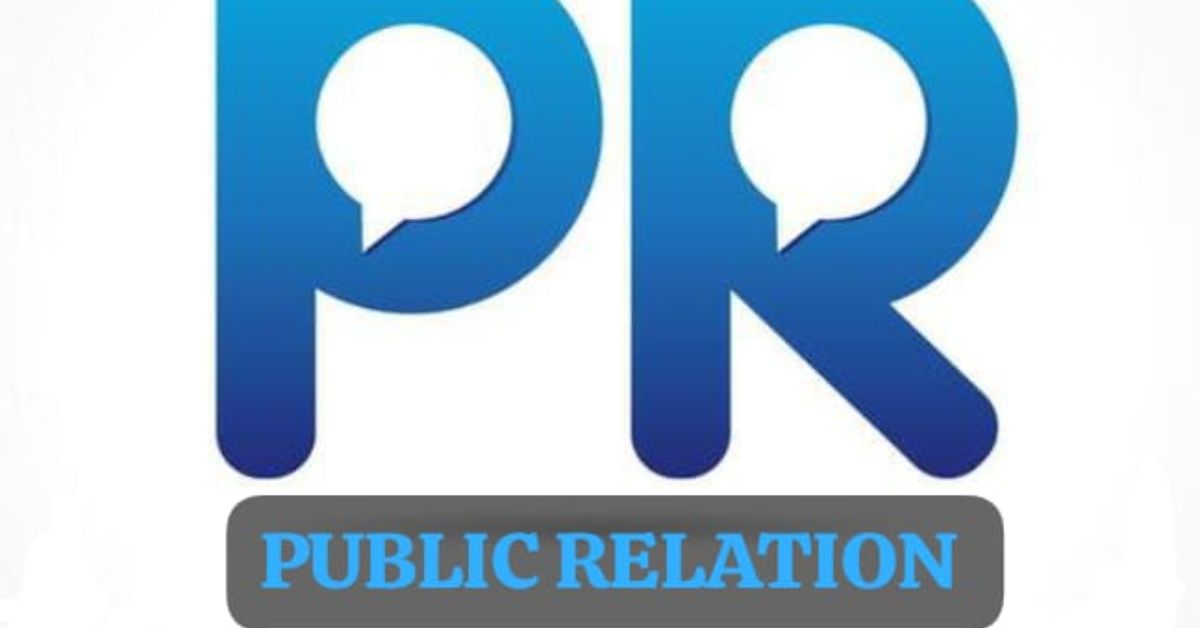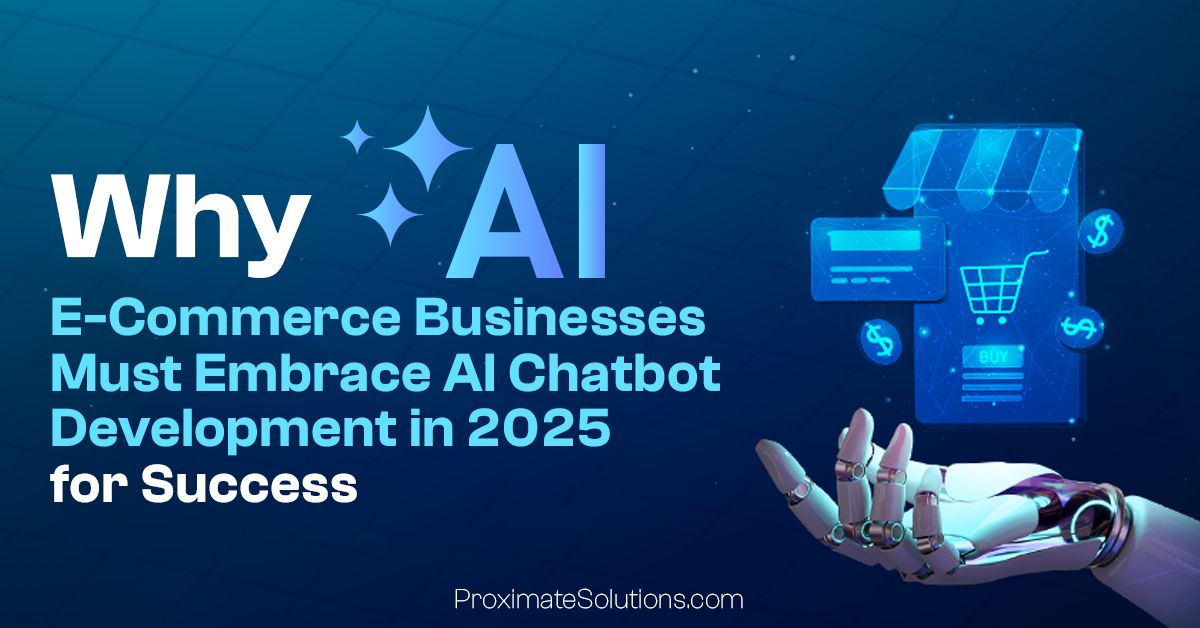TECHNOLOGY
Electron Beam Evaporation: A High-Precision Technique for Thin Film Deposition

In the ever-evolving world of materials science and nanotechnology, thin films have become indispensable across various applications, from electronics to optics and coatings. One of the most effective methods for depositing these films is Electron Beam Evaporation (EBE). This article delves into the principles, advantages, applications, and future prospects of electron beam evaporation, highlighting why it is considered a high-precision technique for thin film deposition.
Understanding Electron Beam Evaporation
Electron Beam Evaporation is a physical vapor deposition (PVD) technique that utilizes a focused beam of electrons to evaporate materials and deposit them as thin films onto a substrate. The process begins by heating a solid material, typically a metal or semiconductor, using an electron beam generated by a heated filament in a vacuum chamber. The energy of the electron beam causes the target material to evaporate, producing a vapor that condenses on the cooler substrate surface.
The electron beam can be precisely controlled, allowing for the accurate deposition of materials in a highly uniform layer. This level of precision makes EBE particularly suitable for applications that require high-quality thin films, such as semiconductors, optical coatings, and decorative finishes. The vacuum environment is essential in this process to minimize contamination and ensure that the deposited film retains its desired properties.
Advantages of Electron Beam Evaporation
One of the primary advantages of Electron Beam Evaporation is its ability to deposit a wide range of materials, including those with high melting points, which are often difficult to vaporize using traditional thermal evaporation methods. The focused energy of the electron beam allows for efficient evaporation, enabling the deposition of materials such as titanium, tungsten, and molybdenum, which are commonly used in microelectronics and other advanced applications.
Another significant benefit is the exceptional control over film thickness and uniformity. The electron beam can be modulated during the deposition process, allowing for real-time adjustments to achieve the desired thickness across large substrate areas. This precision is critical in applications where uniform film characteristics are essential for device performance, such as in semiconductor manufacturing.
Furthermore, Electron Beam Evaporation offers excellent adhesion properties for the deposited films. The high energy of the electron beam enhances the kinetic energy of the evaporated particles, resulting in a denser and more uniform film that adheres well to the substrate. This feature is particularly advantageous in applications where the integrity of the film is paramount, such as optical coatings that require durability and resistance to environmental factors.
Applications of Electron Beam Evaporation
The versatility of Electron Beam Evaporation allows it to be used across various industries and applications. In the semiconductor industry, EBE is employed to deposit thin films of metals and dielectrics, forming essential components of microelectronic devices. For instance, aluminum and copper films, deposited via electron beam evaporation, are commonly used as interconnects in integrated circuits.
In the optics field, EBE is utilized for producing high-performance optical coatings, such as anti-reflective coatings and mirrors. The ability to control film thickness with high precision is crucial for achieving the desired optical properties, ensuring that the coatings perform effectively across a range of wavelengths.
Another significant application of Electron Beam Evaporation is in the production of solar cells. The technique is used to deposit thin films of materials such as cadmium telluride (CdTe) and copper indium gallium selenide (CIGS), which are critical for the efficiency of photovoltaic cells. The ability to create uniform and high-quality films directly impacts the performance and efficiency of solar energy conversion.
Comparing Electron Beam Evaporation with Other Techniques
While Electron Beam Evaporation offers numerous advantages, it is essential to compare it with other thin film deposition techniques to understand its unique strengths and weaknesses. One common alternative is sputtering, a process that involves ejecting atoms from a target material onto a substrate using high-energy ions. While sputtering can deposit films over large areas, it may not achieve the same level of precision in film thickness and uniformity as EBE.
Another technique is thermal evaporation, which relies on heating materials in a vacuum until they vaporize. While thermal evaporation is straightforward and cost-effective, it may struggle with high-melting-point materials and can result in less uniform films due to the absence of focused energy.
In contrast, Electron Beam Evaporation excels in applications where precision and material versatility are critical. The focused energy of the electron beam enables efficient deposition of high-melting-point materials and ensures the uniformity and integrity of thin films, making EBE a preferred choice for advanced applications.
Challenges and Limitations of Electron Beam Evaporation
Despite its many advantages, Electron Beam Evaporation is not without challenges. One notable limitation is the complexity of the equipment required for the process. EBE systems typically require sophisticated vacuum chambers, electron beam sources, and advanced control systems, resulting in higher initial costs compared to simpler deposition methods.
Additionally, the need for a vacuum environment can complicate the process, particularly when integrating EBE with other fabrication techniques. Maintaining the necessary vacuum conditions can be time-consuming and may limit throughput in high-volume production settings.
Another challenge is the potential for substrate heating during the deposition process. The energy from the electron beam can inadvertently heat the substrate, which may affect the properties of sensitive materials. Careful control of deposition parameters and substrate cooling techniques are often required to mitigate these effects and maintain the desired film characteristics.
Future Prospects of Electron Beam Evaporation
Looking ahead, the future of Electron Beam Evaporation appears promising as advances in technology continue to enhance its capabilities. Research efforts are focused on improving the efficiency and reliability of EBE systems, making them more accessible for a broader range of applications. Innovations in electron beam sources and control systems are expected to drive further improvements in film quality and deposition rates.
Moreover, as the demand for advanced materials and devices increases, EBE is likely to play a crucial role in the development of next-generation technologies. The ability to deposit complex multilayer structures and materials with tailored properties will be essential for emerging applications, such as flexible electronics, photonics, and nanotechnology.
Additionally, the integration of automation and real-time monitoring systems into EBE processes is anticipated to enhance productivity and consistency. These advancements will facilitate the transition to high-throughput production environments while maintaining the precision and quality that EBE is known for.
Conclusion
In summary, Electron Beam Evaporation is a high-precision technique that has established itself as a critical method for thin film deposition across various industries. Its unique advantages, including the ability to deposit high-melting-point materials, precise control over film thickness, and excellent adhesion properties, make it a preferred choice for many applications, from semiconductor manufacturing to optical coatings and solar cells.
While challenges such as equipment complexity and substrate heating exist, ongoing advancements in technology and process optimization hold great promise for the future of EBE. As the demand for innovative materials and devices continues to grow, Electron Beam Evaporation will play an increasingly vital role in shaping the landscape of modern manufacturing and technology. Understanding this technique and its applications will be essential for researchers, engineers, and industry professionals seeking to harness the full potential of thin film technologies.
TECHNOLOGY
PR Public Relation Guest Post Agency Guest Posting: A Modern Strategy for Brand Credibility and Digital Authority

In the digital age, where online visibility directly influences brand success, PR Public Relation Guest Post Agency (PR) has evolved from traditional press coverage and event management into a more dynamic, content-driven practice. One of the most effective strategies at the intersection of modern PR and digital marketing is guest posting.
Guest posting—publishing content on external, high-authority websites—not only supports link-building and SEO goals but also plays a critical role in shaping public perception, building thought leadership, and enhancing brand trust. For professionals, startups, and enterprises alike, integrating guest posting into a PR Public Relation Guest Post Agency plan has become an indispensable tactic for long-term brand positioning.
Understanding Guest Posting in the PR Context
Traditionally, PR focused on managing the flow of information between an organization and the public. It was about getting stories into newspapers, interviews on radio, or features on TV. However, the digital shift has changed how audiences consume content. People now turn to blogs, digital publications, industry websites, and social media for insights and updates.
This shift has broadened the definition of PR. It’s no longer limited to media relations—it includes content marketing, thought leadership, influencer partnerships, and most notably, guest posting on authoritative platforms.
Guest posting in PR involves writing and publishing valuable, non-promotional content on websites that align with your industry or target audience. The goal is not just exposure, but positioning your brand or spokesperson as a credible authority, while also subtly driving traffic and improving SEO rankings through contextual backlinks.For more information please contact this email: toppublicrelation@gmail.com
Why Guest Posting Matters for Public Relations
Here’s why guest posting is a vital tool for modern PR Public Relation Guest Post Agency:
1. Establishing Thought Leadership
Credibility is currency in the digital world. When a company’s executive or representative contributes an article to a respected industry site, it reinforces their position as a thought leader. Readers trust websites they follow, so your message carries more weight when published externally than when posted on your brand blog.
Guest posting allows PR professionals to tell their story proactively, providing meaningful commentary on industry trends, innovations, and challenges—before the competition does.
2. Controlling the Narrative
Guest posts offer a powerful form of narrative control. Instead of relying on third-party journalists to interpret your press releases or statements, you get to shape your message directly. With guest posting, your voice becomes the official voice of record, helping prevent misrepresentation or dilution of the message.
This control is especially critical during product launches, rebranding efforts, crisis management, or shifts in company strategy. A well-placed article on a trusted platform can clarify your intentions, inspire confidence, and reduce misinformation.
3. Link Building and SEO
From a technical PR standpoint, backlinks are one of the strongest ranking factors in search engine algorithms. Guest posts are a natural way to earn these links, especially from high-authority domains.
When your content is published on a DA 70+ website and links back to your homepage or landing page with relevant anchor text, it improves your search engine visibility, increases referral traffic, and amplifies your online authority.
PR isn’t just about being seen in the news—it’s about being found when your audience is searching. Guest posting bridges this gap effectively.
How to Use Guest Posting Strategically in PR Campaigns
For a guest posting strategy to support your PR goals, it must be executed with precision. Below are key steps to follow:
1. Define Your PR Objectives
Are you looking to boost brand awareness? Rebuild reputation? Introduce a new product? Increase executive visibility? Your goals will shape the types of websites you target and the content themes you develop.
2. Target the Right Platforms
It’s not just about quantity—it’s about quality. Target websites that:
- Have high Domain Authority (DA)
- Are relevant to your industry or niche
- Have engaged audiences
- Accept guest contributions
Examples include platforms like Entrepreneur, Inc., Business Insider, or niche-specific blogs and publications with loyal readerships.
3. Create Valuable, Non-Promotional Content
Guest posts should never be overt sales pitches. Focus on educating, informing, or solving a problem. Showcase your expertise subtly while delivering genuine value. Content that reads like an article in Forbes, not an ad, will resonate better and be more widely accepted.
4. Craft a Strong Author Bio
The author bio is where you can place a branded backlink and provide credentials. It should reflect the authority of the spokesperson and give readers a clear reason to trust or follow the company.
5. Track Impact and ROI
Track metrics like:
- Referral traffic from guest post backlinks
- Organic keyword rankings
- Brand mentions and citations
- Media coverage triggered by guest post visibility
- Lead generation and conversions
These indicators help measure the real PR impact of guest posting campaigns.
Best Practices for Public Relations Guest Posting
To maximize the benefits of guest posting within your PR strategy, keep these best practices in mind:
- Personalize your outreach:Avoid mass-pitching editors. Tailor your pitches to show familiarity with the site’s tone and topics.
- Stay consistent:Publish regularly, not sporadically. Consistency builds recognition.
- Update your posts:Offer evergreen content, but revisit and refresh when necessary.
- Leverage social media:Share guest posts across LinkedIn, X (Twitter), and Facebook to extend reach.
- Build relationships with editors:Guest posting can open doors to broader PR opportunities like interviews, collaborations, and features.
The Future of PR: Content-Led Brand Building
The era of PR being reliant solely on press releases and journalists is long gone. Brands are now media companies, and their content is their currency. Guest posting fits perfectly into this model, offering a direct channel to communicate with audiences, control messaging, and build digital authority.
In the coming years, we’ll continue to see the fusion of PR, SEO, and content marketing. Agencies and internal teams that understand how to craft compelling guest posts and secure premium placements will lead the conversation in their industries.
Moreover, as AI and automation evolve, the human element—trust, credibility, and storytelling—will matter more than ever. Guest posting remains a tool where human perspective and professional authority can truly shine.
Conclusion
PR Public Relation Guest Post Agency today is a multidimensional effort that includes strategic content distribution, relationship-building, and digital visibility. Guest posting is a core pillar of this strategy—one that not only enhances online authority and improves SEO but also builds real, lasting brand trust.
Whether you’re launching a brand, repositioning a business, or strengthening your digital footprint, guest posting should be an integral part of your PR toolkit. It delivers value beyond a single post—contributing to your brand’s voice, influence, and credibility in a way few other tactics can.
TECHNOLOGY
Why Every E-commerce Store Needs an AI Chatbot Development Company in 2025?

The Future of E-commerce Is AI-Driven
In 2025, customer expectations are evolving faster than ever. E-commerce brands are now competing on speed, personalization and round-the-clock availability. That’s where an AI Chatbot Development Company steps in. With AI transforming customer service, these companies enable businesses to deliver smarter, faster and more human-like support.
Today, 80% of retail and e-commerce businesses are either using or planning to implement AI chatbots. Additionally, the AI chatbot market in e-commerce is expected to reach $2.1 billion by 2032, driven by its ability to streamline operations, reduce costs and boost customer satisfaction.
Furthermore, an AI Chatbot Development agency equips brands with intelligent, automated support systems trained to sound like their brand, respond instantly and retain customer loyalty. Thus, for any business owner tired of answering repetitive questions, chatbots offer the perfect solution.
What Does an AI Chatbot Development Company Offer?
An AI Chatbot Development agency builds smart virtual assistants tailored for e-commerce platforms. These chatbots perform essential functions while saving businesses time and money. Additionally, here’s what they typically offer:
24/7 Customer Support: AI chatbots are always available to help since they never sleep.
Product Recommendations: They personalize suggestions based on browsing behavior.
Order Tracking: Customers get real time updates without contacting human agents.
Multilingual Communication: Breaks language barriers for global markets.
Cart Recovery Campaigns: Reminds customers to complete purchases.
Instant Query Handling: From FAQs to refund policies, bots manage it all efficiently.
Thus, by partnering with a professional AI Chatbot Development Company, brands receive custom built solutions that align with their tone, branding and goals.
How AI Chatbots Are Transforming E-commerce Customer Support
E-commerce customers expect quick responses and relevant solutions. That’s where AI chatbots shine. Additionally, these bots are trained on a company’s knowledge base, FAQs and customer workflows, providing accurate answers instantly. Thus, here’s how they transform customer support
Faster Response Times: Chatbots answer within seconds, reducing wait time.
Scalability: Handle thousands of conversations without needing more staff.
Brand Consistency: They reflect your tone and speak like your business.
Reduced Human Errors: AI systems ensure consistent and factual responses.
Lower Support Costs: Businesses save up to 30% in customer service costs.
Furthermore, a trusted and experienced AI Chatbot Development Company like Proxmate Solutions ensures bots can grow with your business and adapt to changing customer needs. That flexibility is very important in a competitive market.
Why Every E-commerce Business Needs AI Chatbots in 2025
Customer behavior in 2025 demands innovation. Today’s consumers use voice search, prefer messaging over calling and expect instant gratification. AI chatbots meet these demands by integrating seamlessly into websites, apps and messaging platforms.
Furthermore, here are the top reasons to invest in chatbot development
Consumer Trends: Most customers prefer messaging platforms over emails or calls.
Conversion Boost: Bots help customers check out which boosts sales.
Lead Qualification: Chatbots gather user data and segment customers.
Customer Retention: Personalized responses improve satisfaction and loyalty.
Voice Search Optimization: Modern bots work well with voice commands.
This is why hiring an AI Chatbot Development Company is no longer optional. It’s a strategic necessity.
Why Choose Proximate Solutions as Your AI Chatbot Development Company?
With over 20+ years of experience, Proximate Solutions stands out among AI chatbot providers. They are committed to quality, innovation and results-driven services. Whether you’re a startup or an established enterprise, their custom chatbot solutions fit businesses of all scales.
Reasons to hire Proximate Solutions
Proven Experience: Decades of expertise in AI and automation.
Sales-Focused Strategy: They build chatbots that convert, not just communicate.
Affordable Global Services: Competitive rates with top-tier service quality.
Always Up-To-Date: They embrace new AI trends to keep you ahead.
Custom Training: Their bots are trained on your brand tone, FAQs and workflows.
Furthermore, tired of answering repetitive customer queries? Proximate Solutions creates AI-powered chatbots that retain customer engagement, reduce response time and sound exactly like your brand.
Key Benefits of Hiring an AI Chatbot Development Company
Working with an AI Chatbot Development agency offers distinct advantages. Here are the key benefits that e-commerce businesses gain:
Increased Customer Satisfaction: Bots resolve issues quickly and accurately.
Boosted Efficiency: Agents can focus on complex cases while bots handle routine queries.
High ROI: Chatbots reduce support costs and drive conversions.
Brand Loyalty: Personalized interactions build stronger customer relationships.
Seamless Integration: Bots can be added to Shopify, WooCommerce, Magento and more.
Thus, choosing the right partner ensures you make the most of your AI investment. That’s where Proximate Solutions proves its value repeatedly.
A Look at the Future: AI Chatbots and Rising Expectations
By 2025, customers will expect businesses to be available 24/7, responsive and conversational. AI chatbot integration addresses all of these demands.
As the AI market grows, businesses that adopt early will have a competitive edge. AI-powered bots will not just assist but anticipate customer needs, becoming virtual shopping assistants.
Furthermore, future-ready e-commerce brands will use AI to:
- Predict customer preferences
- Handle high volume shopping events
- Improve post purchase engagement
- Offer hyper personalized support
Moreover, brands can successfully adjust to these developments with the help of professionals like Proximate Solutions. Their strategic approach to chatbot development ensures long term growth.
Conclusion: Build the Future of Customer Support Now
It’s very important to match customer expectations in the rapidly evolving world of e-commerce today. AI chatbots do more than answer questions; they build trust, drive sales and elevate brand experience. Thus, the businesses that recognize this shift and partner with an expert AI Chatbot Development Company will lead the way.
Furthermore, Proximate Solutions is one of the best choices to start this journey. With a proven track record, global reach and sales-focused strategies, they help e-commerce stores thrive in the AI-powered era.
Thus, don’t let your brand fall behind. Invest in AI chatbot solutions that speak your brand’s language, serve your customers 24/7 and power your business into the future.
Frequently Asked Questions (FAQs)
- What is an AI Chatbot Development Company?
It’s a company that creates intelligent chatbots using artificial intelligence to automate customer support and sales processes.
- Why do e-commerce stores need AI chatbots in 2025?
Customer expectations demand instant responses and 24/7 support which AI chatbots provide efficiently.
- How much does it cost to hire an AI Chatbot Development Agency?
Costs vary, but companies like Proximate Solutions offer competitive pricing tailored to your business size.
- Can AI chatbots increase my e-commerce sales?
Yes. They assist during purchase decisions, offer upsells and remind customers to complete abandoned carts.
- Are AI chatbots compatible with Shopify or WooCommerce?
Absolutely. An experienced AI Chatbot Development agency can integrate bots into all major platforms.
- How do AI chatbots personalize customer experiences?
They use browsing history, previous orders and user preferences to offer tailored product suggestions.
- How secure is customer data with AI chatbots?
Top companies follow strict data protection protocols and ensure GDPR and CCPA compliance.
TECHNOLOGY
Using Dynamics 365 Customer Engagement to Build Stronger Customer Relationships

In today’s ultra-competitive business environment, having a great product or service is no longer enough. Customers expect personalized experiences, quick responses, and proactive engagement. The brands that stand out are the ones that truly understand their customers and build relationships that go beyond the transaction.
That’s where Dynamics Customer Engagement (part of Microsoft Dynamics 365) comes in. This powerful suite of applications helps businesses manage interactions and elevate every touchpoint—from sales and marketing to service and support.
In this post, we’ll explore how Dynamics 365 Customer Engagement enables businesses to build stronger customer relationships by unifying data, automating processes, and delivering personalized experiences.
What Is Dynamics Customer Engagement?
Dynamics 365 Customer Engagement (D365 CE) is a collection of applications within Microsoft’s Dynamics 365 ecosystem designed to manage customer-facing functions. These include:
- Sales
- Customer Service
- Marketing
- Field Service
- Project Service Automation
These apps help businesses gain a 360-degree view of customers, track interactions, automate follow-ups, and provide consistent, data-driven experiences at every customer journey stage.
Key ways Dynamics Customer Engagement builds stronger relationships
1. A Unified view of the customer
Nothing damages a relationship like fragmented communication. With Dynamics Customer Engagement, all customer data—past purchases, support tickets, email interactions, preferences—is unified in one place. This gives your teams complete visibility into who the customer is and what they need.
Sales, marketing, and service teams can all work from the same playbook. This ensures no customer falls through the cracks and every conversation feels informed and consistent.
2. Personalized Engagement at Scale
Customers want to feel understood, not marketed to. Dynamics Customer Engagement empowers you to deliver hyper-personalized experiences by leveraging AI-powered insights and behavioral data.
With dynamic segmentation in the marketing app, for example, you can send tailored messages based on a customer’s interests, buying history, or activity level. The sales team can use predictive insights to recommend the right next steps. Support agents get context about previous issues so they don’t have to ask customers to repeat themselves.
This level of personalization shows customers that you’re not just managing a database—you’re invested in the relationship.
3. Automated, Timely Interactions
Timeliness is key in maintaining strong relationships. Whether it’s a sales follow-up, service update, or birthday greeting, Dynamics Customer Engagement helps you automate communication without losing the human touch.
You can set up workflows to trigger emails, assign tasks, or escalate issues automatically. This ensures customers are always in the loop and feel valued, without overwhelming your team with manual follow-ups.
Marketing automation, in particular, lets you nurture leads with the right content at the right time, increasing trust and conversion rates.
4. Proactive Customer Service
Great relationships are built on trust, often from solving problems before they escalate.
With Dynamics Customer Engagement, your service teams can become proactive instead of reactive. Built-in dashboards and AI-driven insights can flag potential issues early, allowing you to reach out to customers before they complain.
The system can also suggest the next best actions, knowledge articles, or even automatically route cases to the most qualified agent. This reduces resolution time and boosts customer satisfaction.
5. Mobility and Accessibility
Today’s workforce is mobile, and so are customers. Dynamics CE is accessible across devices, ensuring that your team can engage with customers wherever they are—whether it’s on the sales floor, in the field, or working remotely.
Sales reps can pull up real-time customer data before a meeting. Service agents can respond to queries from a tablet. Field technicians can update job status on-site. That level of connectivity keeps your team aligned, informed, and ready to serve.
Real-World Example: Turning Data into Delight
Let’s say you run a mid-sized B2B company. You’ve been struggling with customer churn and inconsistent service experiences. By implementing Dynamics Customer Engagement, you’re able to:
- Sync sales, service, and marketing teams onto one platform
- Segment customers by industry and behavior
- Automate onboarding emails and product tips
- Flag inactive accounts for proactive outreach
- Equip support agents with detailed customer histories
Over six months, your churn rate drops, customer feedback improves, your team feels empowered, and most importantly, your customers feel like they matter because every interaction reinforces that belief.
Choosing the Right Dynamics CE Modules
Depending on your goals, you might not need the entire Dynamics suite. Here’s a quick guide:
- For Relationship Management & Sales: Start with Dynamics 365 Sales.
- For Personalized Marketing Campaigns: Use Dynamics 365 Marketing.
- For Omnichannel Customer Support: Go with Dynamics 365 Customer Service.
- For On-site Services: Consider Dynamics 365 Field Service.
Each module can work independently or as part of a connected solution, giving you flexibility as your business evolves.
Final Thoughts: Relationship-Building in the Digital Age
In an age where customers are bombarded with choices, loyalty comes down to how they feel about your brand. Do they feel heard? Understood? Valued?
Dynamics Customer Engagement helps answer those questions with a resounding “yes.” Combining unified data, intelligent insights, and personalized automation transforms how you connect with customers, from one-off transactions to long-term partnerships.
If building stronger relationships is a priority for your business—and it should be—investing in the right tools like Dynamics Customer Engagement isn’t just a tech decision. It’s a growth strategy.
-

 TECHNOLOGY2 years ago
TECHNOLOGY2 years agoElevating Game Day Eats: A Guide to Crafting Crowd-Pleasing Sliders
-

 ENTERTAINMENT2 years ago
ENTERTAINMENT2 years agowave_of_happy_: Your Ultimate Guide
-

 FASHION2 years ago
FASHION2 years agoGPMsign Fashion: Redefining Style with Purpose
-

 TECHNOLOGY1 year ago
TECHNOLOGY1 year agoTrader Joe’s Dayforce: Revolutionizing Workforce Management
-

 FOOD2 years ago
FOOD2 years agoAltador Cup Food Court Background: A Culinary Extravaganza Unveiled
-

 SPORTS2 years ago
SPORTS2 years agoScore Chaser Sporting Clays: A Thrilling Pursuit of Precision
-

 HOME IMPROVEMENT1 year ago
HOME IMPROVEMENT1 year agoWhat Kitchen Renovation Companies Offer Beyond Basic Remodeling
-

 NEWS2 years ago
NEWS2 years agoNyl2 Kemono: Unveiling the World
